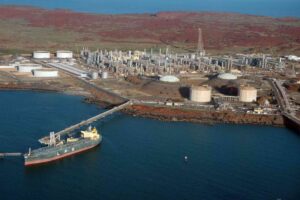The climate policy debate in Australia is currently pre-occupied with how to cut pollution, rather than how big the cuts need to be. With an election just around the corner, a new report commissioned by WWF-Australia helps to put the spotlight back on the question of ambition and what a stronger emissions target could mean for the economy.
Since 2009 there has been bipartisan political support for reducing Australia’s carbon pollution levels by between 5 and 25 per cent off 2000 levels by 2020, depending on the level action internationally. This target range has been pledged internationally, including under phase-two of the Kyoto Protocol and as part of the Cancun Agreements, which includes commitments from all major emitting nations.
Those opposed to ambitious action on climate change have consistently claimed that anything stronger than a 5 per cent target would result in economic ruin. WWF commissioned Vivid Economics (with modelling support from Monash University) to assess this claim.
Specifically, Vivid Economics and Monash University were asked to take a fresh look at three persistent claims about the economic costs of Australia taking action to reduce carbon emissions: first, that reducing emissions is an inherently costly exercise that will cause harm to Australia’s economy; secondly, that any target above 5 per cent would result in more economic pain; and finally that the best option economically is to allow unlimited access to overseas carbon permits to meet targets.
It turns out that the first two of these claims are just plain wrong, and the third claim fails to recognise the potential economic benefits of making deeper emission cuts at home.
Turning first to the claim that cutting emissions is inherently costly, the study found that reducing Australia’s economic dependence on carbon pollution is likely to have only a small impact on economic growth. To be precise, the modelling projects that achieving a 5 per cent target would shave just 0.3 per cent off gross domestic product (GDP) in 2020. Instead of expanding by 28.2 per cent between 2012 and 2020, national income would expand by 27.6 per cent – the equivalent of having to wait just an extra two months to be as rich as we would otherwise have been in 2020.
These latest estimates of the economic impacts are around four times lower than Treasury estimated back in 2008 as part of the Garnaut Review, and which informed the setting of the bipartisan 5-25 per cent target range. This is largely due to much lower carbon prices. But even if the costs are four times higher, we are still only talking about a matter of months for economic growth to catch up.
The second claim – that adopting a stronger target automatically increases the costs – is also challenged by this latest modelling. Under Australia’s emissions trading scheme – which will be linked to the international carbon market from 2015 – the cost of achieving the national target is determined by the international carbon price, not by the strength of the target itself. This is something that is often not well understood, so it is worth explaining.
The price we pay for most internationally traded goods is determined by global supply and demand conditions. This is exactly the same for carbon as it is for oil, or any other commodity. Setting a stronger emissions target in Australia would mean the Government issuing fewer emissions permits into the market. While this would constrain the global supply of carbon permits, the impact is unlikely to be large enough to influence the international carbon price. The relatively small size of Australia’s carbon market means that we are more likely to be a price-taker, rather than a price-setter.
In effect, this means Australia can move to a stronger target without increasing the carbon price paid by Australian companies, and with only a marginal impact on Australia’s overall economic strength. Indeed, the economic modelling undertaken for the Vivid Economics study found that moving from a 5 per cent to a 25 per cent target would shave just an extra 0.01 per cent off GDP in 2020 and 0.06 per cent off gross national income.
This means, under an emissions trading scheme, Australia can adopt a target that is five times stronger at almost no extra cost to the economy.
The third claim debunked by the Vivid Economics study is that reducing emissions at home is too expensive. The modelling assessed the economic impact of requiring more of the emissions to be saved at home by imposing a stronger restriction on the use of overseas permits. It was found that while this does lead to a higher GDP impact, the additional costs are still relatively small – shaving just 0.1 per cent a year off national economic growth between now and 2020. However, domestic emissions cuts are almost three times as large, and the impact on GNI is also substantially lower, with $1.2 billion less flowing offshore each year.
There is no doubt that giving companies access to international markets is likely to reduce the cost of achieving emissions targets. However, this does not mean we can’t also afford to reduce emissions within Australia. Indeed, the analysis by Vivid Economics points out that making deeper emission cuts at home, rather than relying too much on international markets to achieve targets, could mean Australia’s economy is much better placed to deal with higher carbon prices in the future. As the report’s authors point out:
Australia may not be well positioned for a global low carbon economy at present, but stronger domestic emissions reduction action will help. The required change in technologies to realise a low-carbon future could be massively disruptive to existing patterns of international trade and comparative advantage. Continued and strengthened domestic mitigation action including through carbon pricing will be important in turning this threat into an opportunity.
In addition to putting the spotlight on the question emission targets, this new report also has some important implications for the current debate on carbon pricing versus “Direct Action”.
While the study did not examine the Coalition’s Direct Action policy it can be inferred that this policy could not achieve the 25 per cent target at the same low cost because the Coalition explicitly rules out the use of international permits. The modelling shows that blocking overseas permits drives up the overall GDP cost. The implication, therefore, is that direct action would come at a higher price to the economy than a carbon price.
While Coalition’s interest in promoting low carbon investments at home is commendable, this should not come at the expense of being able to move to stronger pollution cuts. This is particularly important given the fact that Australia will come under increasing international pressure next year to move to a higher target.
In short, keeping the emissions trading scheme in place gives Australia the flexibility to deliver ambitious emissions cuts in an economically sensible manner.
Will McGoldrick is Climate Change Policy Manager at WWF-Australia. The Vivid Economics study can be downloaded from http://www.wwf.org.au/?7020/Go-deeper-for-cheaper









